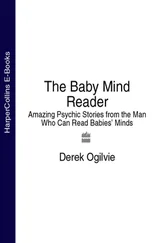Cerebrospinal Fluid: A liquid found within the ventricles of the brain and the central canal of the spinal cord.
Cholecystokinin: A hormone released from the lining of the stomach during the early stages of digestion which acts as a powerful suppressant of normal eating. It also is found in the brain.
Circadian Rhythm: A cycle of behavior or physiological change lasting approximately 24 hours.
Classical Conditioning: Learning in which a stimulus that naturally produces a specific response (unconditioned stimulus) is repeatedly paired with a neutral stimulus (conditioned stimulus). As a result, the conditioned stimulus can become able to evoke a response similar to that of the unconditioned stimulus.
Cochlea: A snail-shaped, fluid-filled organ of the inner ear responsible for transducing motion into neurotransmission to produce an auditory sensation.
Cognition: The process or processes by which an organism gains knowledge of or becomes aware of events or objects in its environment and uses that knowledge for comprehension and problem-solving.
Cone: A primary receptor cell for vision located in the retina. It is sensitive to color and used primarily for daytime vision.
Cornea: A thin, curved transparent membrane on the surface of the front of the eye. It begins the focusing process for vision.
Corpus Callosum: The large bundle of nerve fibers linking the left and right cerebral hemispheres.
Cortisol: A hormone manufactured by the adrenal cortex. In humans, it is secreted in greatest quantities before dawn, readying the body for the activities of the coming day.
Cotard's syndrome: A disorder in which a patient asserts that he is dead, claiming to smell rotting flesh or worms crawling over his skin. It may be an exaggerated form of Capgras' delusion, in which not just one sensory area (ie face recognition) but all of them are cut off from the limbic system. This would lead to a complete lack of emotional contact with the world.
D
Dendrite: A tree-like extension of the neuron cell body. Along with the cell body, it receives information from other neurons.
Dopamine: A catecholamine neurotransmitter known to have multiple functions depending on where it acts. Dopamine-containing neurons in the substantia nigra of the brainstem project to the caudate nucleus and are destroyed in Parkinson's victims. Dopamine is thought to regulate emotional responses, and play a role in schizophrenia and cocaine abuse.
Dorsal Horn: An area of the spinal cord where many nerve fibers from peripheral pain receptors meet other ascending nerve fibers.
E
Endocrine Organ: An organ that secretes a hormone directly into the bloodstream to regulate cellular activity of certain other organs.
Endorphins: Neurotransmitters produced in the brain that generate cellular and behavioral effects like those of morphine.
Epinephrine: A hormone, released by the adrenal medulla and the brain, that acts with norepinephrine to activate the sympathetic division of the autonomic nervous system. Sometimes called adrenaline.
Estrogens: A group of sex hormones found more abundantly in females than males. They are responsible for female sexual maturation and other functions.
Evoked Potentials: A measure of the brain's electrical activity in response to sensory stimuli. This is obtained by placing electrodes on the surface of the scalp (or more rarely, inside the head), repeatedly administering a stimulus, and then using a computer to average the results.
Excitation: A change in the electrical state of a neuron that is associated with an enhanced probability of action potentials.
F
Follicle-Stimulating Hormone: A hormone released by the pituitary gland. It stimulates the production of sperm in the male and growth of the follicle (which produces the egg) in the female.
Forebrain: The largest division of the brain, which includes the cerebral cortex and basal ganglia. It is credited with the highest intellectual functions.
Frontal Lobe: One of the four divisions (parietal, temporal, occipital) of each hemisphere of the cerebral cortex. It has a role in controlling movement and associating the functions of other cortical areas.
G
Gamma-Amino Butyric Acid (GABA): An amino acid transmitter in the brain whose primary function is to inhibit the firing of neurons.
Glia : Specialized cells that nourish and support neurons.
Glutamate: An amino acid neurotransmitter that acts to excite neurons. Glutamate probably stimulates N-methyl-D-aspartate (NMDA) receptors that have been implicated in activities ranging from learning and memory to development and specification of nerve contacts in a developing animal. Stimulation of NMDA receptors may promote beneficial changes, while overstimulation may be the cause of nerve cell damage or death in neurological trauma and stroke.
Gonad: Primary sex gland: testis in the male and ovary in the female.
Growth Cone: A distinctive structure at the growing end of most axons. It is the site where new material is added to the axon.
H
Hippocampus: A seahorse-shaped structure located within the brain and considered an important part of the limbic system. It functions in learning, memory and emotion.
Hormones: Chemical messengers secreted by endocrine glands to regulate the activity of target cells. They play a role in sexual development, calcium and bone metabolism, growth and many other activities.
Hypothalamus: A complex brain structure composed of many nuclei with various functions. These include regulating the activities of internal organs, monitoring information from the autonomic nervous system and controlling the pituitary gland.
I
Immediate Memory: A phase of memory that is extremely short-lived, with information stored only for a few seconds. It also is known as short-term and working memory.
Inhibition: In reference to neurons, it is a synaptic message that prevents the recipient cell from firing.
Ions: Electrically charged atoms or molecules.
Iris: A circular diaphragm that contains the muscles which alter the amount of light that enters the eye by dilating or constricting the pupil. It has an opening in its center.
J
K
Korsakoff's Syndrome: A disease associated with chronic alcoholism, resulting from a deficiency of vitamin B-1. Patients sustain damage to part of the thalamus and cerebellum. Symptoms include inflammation of nerves, muttering delirium, insomnia, illusions and hallucinations and a lasting amnesia.
L
Limbic System: A group of brain structures - including the amygdala, hippocampus, septum and basal ganglia - that work to help regulate emotion, memory and certain aspects of movement.
Long-Term Memory: The final phase of memory in which information storage may last from hours to a lifetime.
M
Mania: A mental disorder characterized by excessive excitement. A form of psychosis with exalted feelings, delusions of grandeur, elevated mood, psychomotor overactivity and overproduction of ideas.
Melatonin: Produced from serotonin, melatonin is released by the pineal gland into the bloodstream. It affects physiological changes related to time and lighting cycles.
Memory Consolidation: The physical and psychological changes that take place as the brain organizes and restructures information in order to make it a permanent part of memory.
Metabolism: The sum of all physical and chemical changes that take place within an organism and all energy transformations that occur within living cells.
Mitochondria: Small cylindrical particles inside cells that provide energy for the cell by converting sugar and oxygen into special energy molecules.
Читать дальше











![John Bruce - The Lettsomian Lectures on Diseases and Disorders of the Heart and Arteries in Middle and Advanced Life [1900-1901]](/books/749387/john-bruce-the-lettsomian-lectures-on-diseases-and-disorders-of-the-heart-and-arteries-in-middle-and-advanced-life-1900-1901-thumb.webp)
